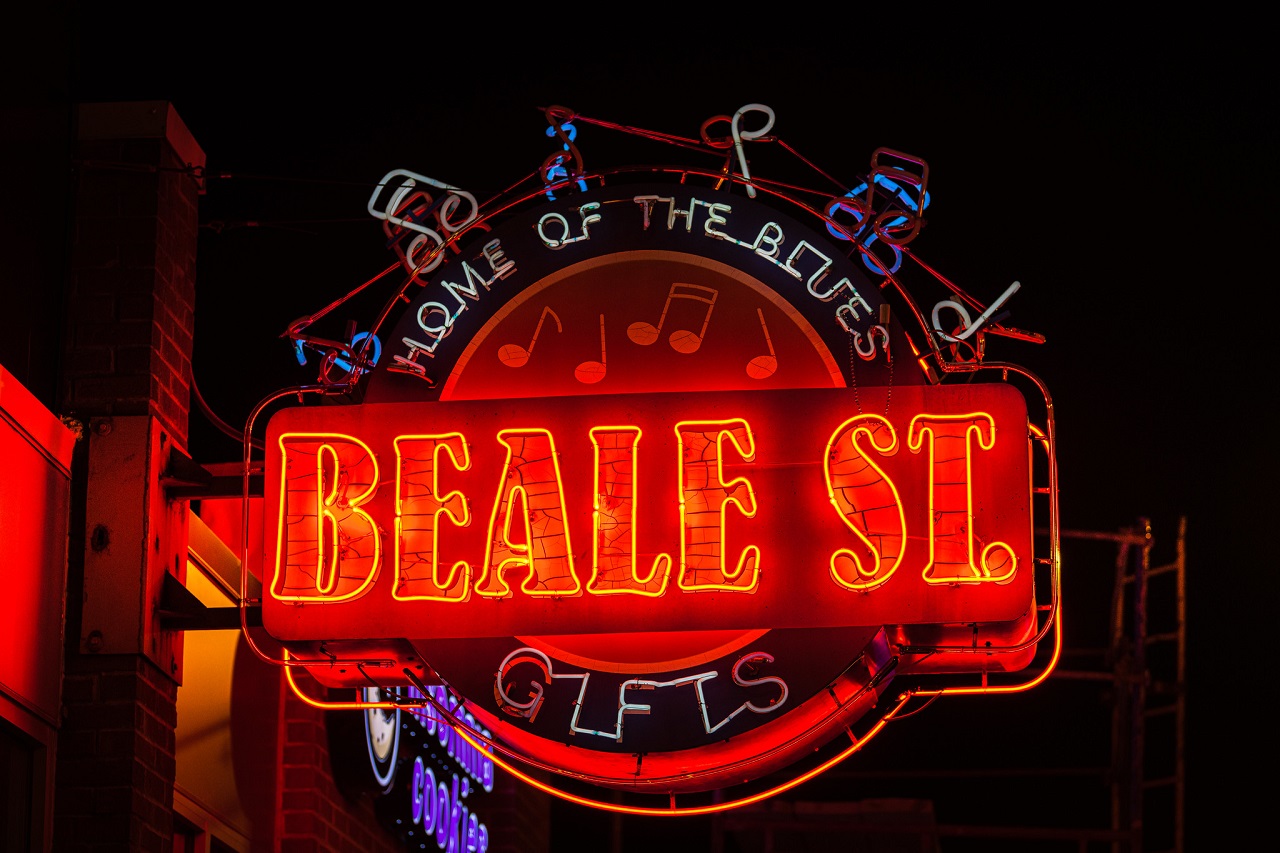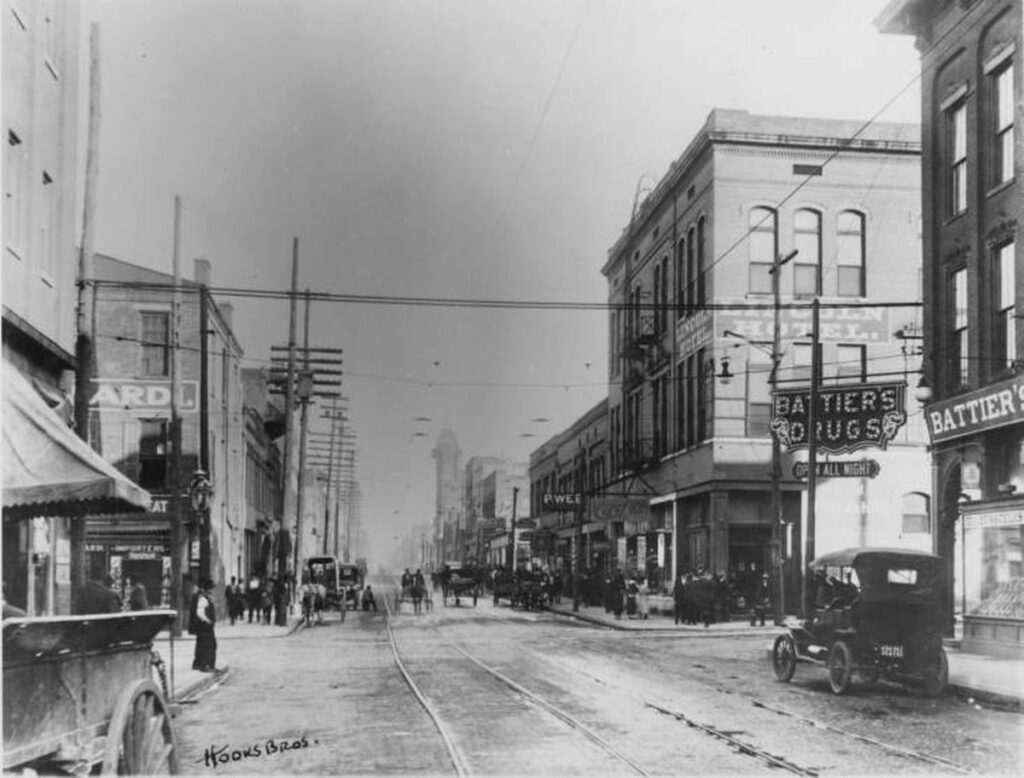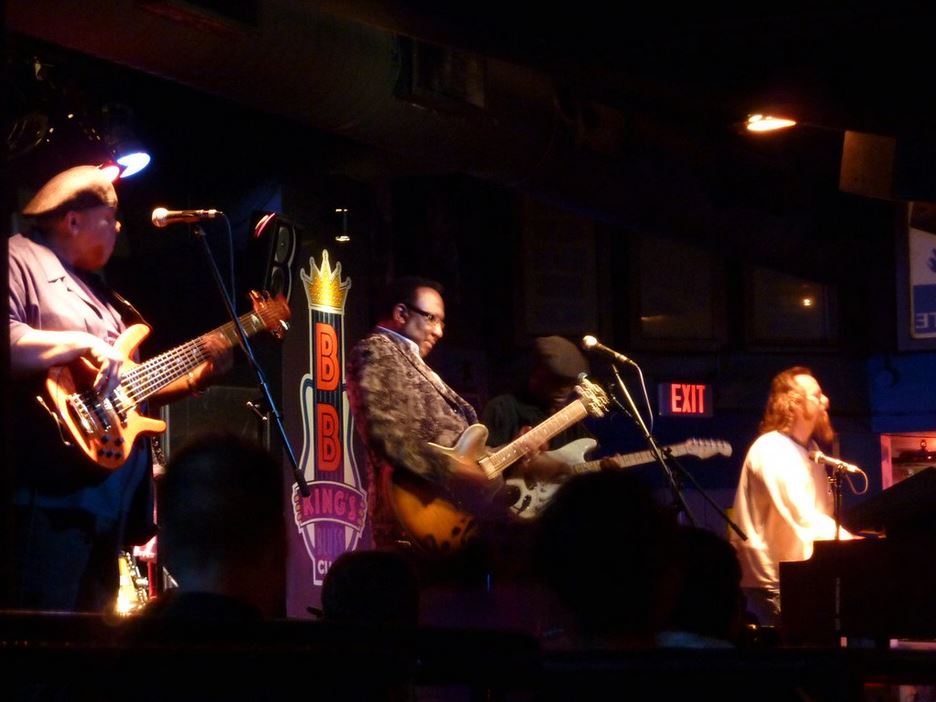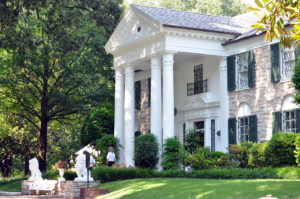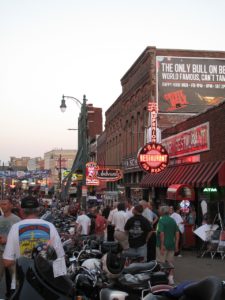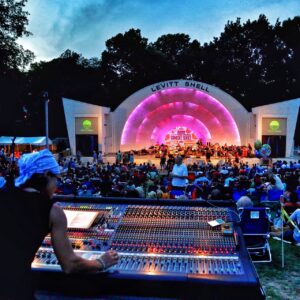Located in downtown Memphis TN and traveling east/west from the Mississippi River , the neon-lit Beale Street is not only a enduring, entertainment draw for tourists and locals to Memphis, it’s also an iconic representation of the development of blues music which began in America.
Although Beale has blues running deep in it’s veins, the street also represents the struggles and successes of the black community and the wider civil rights fight that grew from the injustices on the black and impoverished populace. In this week’s Memphis-based article from Trustworthy Towing Service, we wanted to explore the importance that this road has had on our understanding and appreciation for American culture through its contribution to the development of blues and, likewise, to the civil rights movement of the era.
An Upper-Class Beginning
Originally named “Beal Avenue” after Edward H. “Ned” Beal, a hero in the Mexican-American War, the street and surrounding thoroughfares were designed as a walk-able upper middle-class district adjacent to downtown Memphis with a mixture of shops, apartments, and larger residential homes including the Hunt-Phelan home which still stands after more than 180 years since it was built in 1832.
After the civil war, the area drew a number of Freed slaves, Union officers, and immigrants including Irish, Jewish, and, Italian who were attracted to the deep pockets of the residents in the area and the relatively accommodating reputation that were hard to come by in the post-war south.
Over time, Beale Street became a focal point for the African American community and a major part of black culture in Memphis, much like Bourbon Street is for New Orleans. African Americans made many contributions to Beale Street’s development, highlighted by one of it’s most famous entertainers – W. C. Handy was inspired by a walk down Beale Street as he heard music from an African American cabaret and was driven to write his most famous tune – the acclaimed “Memphis Blues.” Handy, a later inductee into the Rock and Roll Hall of Fame, became known as the Father of the Blues and has been inducted to the Blues Foundation’s Blues Hall of Fame.
Changing Clientele
Beale Street underwent many changes throughout the years. In 1930, Robert Church purchased a large amount of real estate on and around Beale Street that had been owned by the Church family. Church invested $250,000 into revamping Beale Street and building his own clubs: Club Handy and The Three M Men’s Shop. He also hired architect Sam Cooper to build two apartment buildings near Beale Street. Many other clubs opened along Beale Street, including The Palace Theater, which was built in 1934 and hosted the famous “Jitney Show,” a revue that poked fun at current events while showcasing famous black artists. To this day, the “Jitney Show” is still written and performed on Saturdays at Bar DKDC.
Trouble began brewing in the 1940s. Black teenagers had gained access to clubs on the street, but many of them were denied entry into The Plantation Club. Police told black business owners they needed to keep out whites or close their businesses. Many club owners decided it was better to let whites enter than risk losing everything, and most of the black-owned clubs on Beale Street closed. This racial changeover (a small amount of whites entering previously all-black establishments, with a large number of African Americans being excluded from white-only establishments) helped spawn the Beale Street Blues Boycott of 1941 in which riot broke out that night which lasted for almost two weeks and left thousands of dollars in damage. The boycott brought attention to the unfair treatment of business owners on Beale Street, which many now considered a symbol of segregation.
WWII and Beale Street
The “Jitney Show” ended in 1942 as America entered WWII and most men went into the military; those that stayed were those deemed unfit for service or those with money enough not to go into the service. In 1949, Robert Church Jr. died and his family sold most of their Beale Street properties. The city of Memphis condemned several buildings to expand the park and in 1950, Grandfather Clock Square was created by removing some clubs and activities and putting up a new YMCA building. As more whites moved back onto Beale Street, a new segregation tactic was employed: a “color line” at the door of most clubs. A sign was placed on Beale Street that read “You must be 21 and able to prove it.” This excluded many blacks because they could not get work or were deemed unfit for service during WWII. White business owners returned to the former policy of excluding African Americans.
The 1950s brought new hope for changing racial policies on Beale Street. In 1955, local businesses asked Joe D. Hunter Sr., a black city councilman, to represent them in negotiations with other business owners, fearing police would continue enforcing unfair rules. It took another six years for the segregation to end, but on July 2, 1961, signs reading “Everyone Welcome” went up over Beale Street. The boycott ended with one final nighttime march down Beale Street that was led by Dr. Martin Luther King Jr..
After the Civil Rights Act of 1964 passed, racial tension decreased significantly and Beale Street flourished as a center of black nightlife. The “Jitney Show” was resurrected by the Theater Owners Bookers Association (TOBA) in 1968, and continued to feature famous black performers until it ended again in 1974. This downturn began with the assassination of Dr. Martin Luther King Jr., which coincided with political corruption within local government and a general decrease in the local economy.
Improvements in the 80’s
In 1981, Memphis mayor Dick Hackett formed a committee to create a Beale Street Development Corporation. In 1984, EPE, Inc., purchased much of Church’s personal property on Beale Street from Church’s heirs for over $1 million. The City of Memphis bought other properties on the street to repair the area. “The Jitney Jungle” opened in 1985 by Larry Davis, which was one of the first serious efforts to revitalize Beale Street since Dr. King’s death.
In 1987, the City of Memphis created a Beale Street Task Force with local business owners to further improve the area. They took measures to attract more of a downtown crowd to Beale Street, including an annual street festival. The city also began offering tax breaks for businesses to renovate their buildings.
Impact on Popular Music
The Beale Street music scene has had a significant impact on the development of popular music through the development of blues and early rock-n-roll. From the early blues-men of the era including including W.C. Handy, Bessie Smith, and later with the blues and jazz great such as Howlin’ Wolf, B.B. King, Louis Armstrong, Memphis Minnie, and Muddy Waters. Interestingly enough the initials B.B in B.B King stood for “Beale Street Blues Boy”, to which the guitar great shortened as he became more popular.
As a teenage boy in Memphis, Elvis Presley must have spent time soaking up the many musical style playing at the juke-joints, jazz clubs, and honky-tonks on the street, and spent some hard earned cash buying some of his first stylish suits and shirts from the Lansky Brothers suit and clothing store.
A natural draw for the earliest shows by Elvis, it was the nearby that really gave Elvis
After Elvis toured the Beale street club scene for free as a rising star, it was the Levitt Shell, an open-air amphitheater, that gave him his first paid gig, and some say – the confidence to play in front of larger crowds – when he opened for headliner Slim Whitman.
Recognizing Beale’s Importance
In 1993, the National Civil Rights Museum was opened on the old Lorraine Motel where Dr. Martin Luther King Jr. had died in 1968; it made Beale Street even more of a landmark in the national civil rights movement. This sparked new revitalization efforts, including refurbishing historic buildings to turn into clubs and it brought many more visitors to the street than had been seen in years.
The Beale Street Development Corporation was established in 2004 by Tennessee governor Phil Bredesen to continue the area’s growth. The next year, the first annual “Memphis Music Monday” concert was held on the plaza next to the Beale Street. In 2006, a new museum dedicated to W. C. Handy was opened.
Adapting To Changes
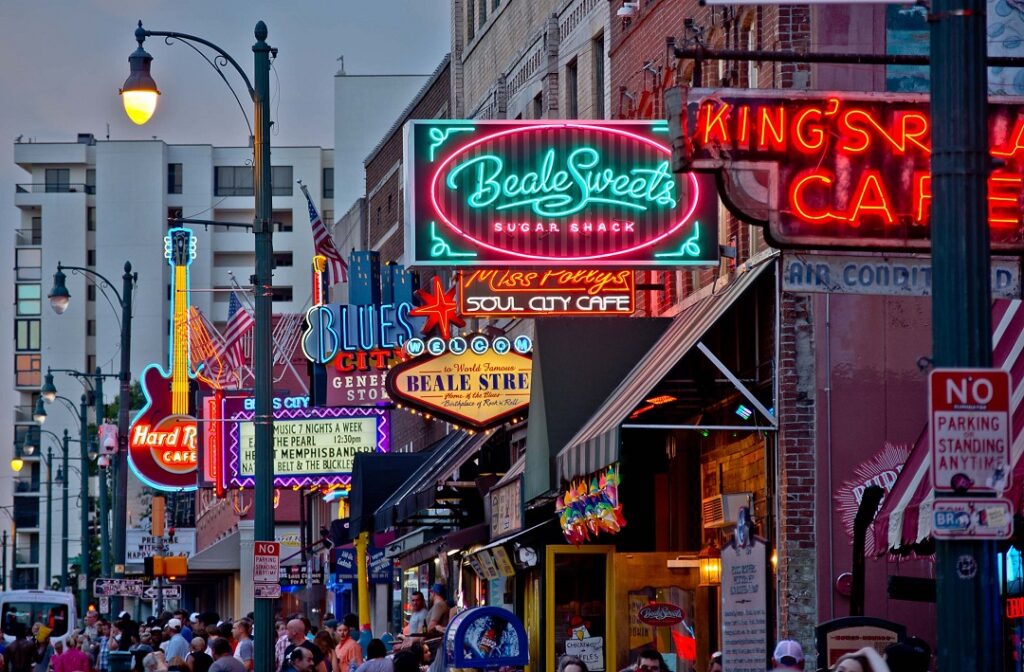
The new century brought a lot of change and new life to Beale Street as a whole, but also some controversy for this historic landmark district. By the end of the decade, major changes in musical and social preferences led to a significant decrease in visitors and revenue for Beale Street; both Dizzy’s and Rum Boogie were closed by 2011. A new Memphis Grizzlies arena was built on one side of Beale Street where The Orpheum once stood, which opened in October 2012. The other side was redeveloped into shops and restaurants, including one that had been an original site for Elvis Presley’s Memphis opening.
On January 28, 2013, the Beale Street Caravan Association announced they would be hosting their first music festival entitled “Memphis Music Monday Presents Beale Street Caravan”. It featured an outdoor concert on the plaza in front of the FedExForum, followed by a week’s worth of free shows at local clubs.
Conclusion
Beale Street is still a popular destination for music enthusiasts today, with live blues regularly performed in most clubs. A large portion was damaged by a massive tornado on the afternoon of April 10th, 2011. Fortunately, no one was seriously injured and most physical damage has been repaired after only two months .
Beale Street is an important part of African American history that’s reflected in its many musical contributions over time. As it continues to grow and change with the rest of Memphis, its unique character will live on through all who visit.
What’s to do on Beale Street?
Planning a visit to Memphis? Sure there’s Elvis, but you can’t pass up Beale Street for a complete Memphis experience. Check out our article on 10 Things To Do on Beale Street
Beale Street Location
Beale Street is located in Downtown Memphis, Tennessee, which runs from the Mississippi River to East Street, a distance of approximately 1.8 miles (2.9 km). Directions showing from Trustworthy Towing Service Memphis…

